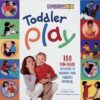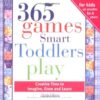
When a child takes the first step on their own, a new phase in development begins. At this stage, children are now free to roam around their world. It’s a time for active exploration of their environment. Language development takes significant leaps, which leads to learning the names of objects of interest and the ability to ask for things. As they discover their independent nature, they also develop the ability to say “NO!”
A major challenge is developing what psychologists call “emotional regulation” during this developmental stage. “Meltdowns” are common during this period. Still, parents can use the bond created during infancy to help their children learn to modulate their emotional expression and begin to grasp the difficult concept of delay of gratification. While they instinctively seem to be able to say “No,” toddlers also need help learning how to accept “No” from others.
This is also a stage of rapid physical and intellectual development in preparing these children for starting school, which includes interacting cooperatively with peers while at the same time being able to compete physically and intellectually. A child’s parent is in the position to be a coach providing just the right combination of encouragement, support, and guidance. Parents also need to serve as the primary teacher for the mastery of basic learning skills and encourage active discussion and experimentation with new concepts and skills.
Moving Onward (Encouraging Development):
Toddler Developmental Milestones
18 To 24 Months
Gross (Large) Motor Skills
- Runs stiffly
- Jumps off the ground with both feet
- Bends at the waist to pick up object
- Walks up and down steps, one step at a time
- Throws objects overhead
- Kicks a large ball
- Climbs onto low objects
- Kicks backward and forward
- Stands on a balance beam
- Walks up stairs with help
- Runs well
- Enjoys riding small wheeled riding toys
Fine (Small) Motor Skills
- Manages spoon
- Makes vertical marks and circles with crayon (pencil)
- Turns doorknobs
- Pulls down zippers
- Shows hand preference, but switches hands often
- Assists in dressing and undressing self
- Can draw scribbles
- Drinks from a straw
Two to Three Years
Gross (Large) Motor Skills
- Is constantly in motion
- Jumps off low objects
- Pushes self on wheeled toys
- Runs but has difficulty stopping
- Seats self in small chairs
- Alternates feet going upstairs, but not downstairs
- Kicks ball
- Throws ball overhand; no aim
- Catches objects with arms extended and elbows stiff
- Walks backward
- Can balance on one foot (by 3 years)
- Walks up and down stairs independently
Fine (Small) Motor Skills
- Turns individual pages of a book
- Screws lids on and off
- Builds crude towers of six or more blocks
- Scribbles circles and horizontal and vertical lines
- Takes simple objects apart and puts back together
- Uses spoon; spills a lot
- Strings large beads
- Holds scissors correctly
- Zips and snaps
18 To 24 Months
- Can name a number of objects common to his surroundings
- Is able to use at least two prepositions, usually chosen from the following: in, on, under
- Combines words into a short sentence-largely noun-verb combinations (mean) length of sentences is given as 1.2 words
- Approximately 2/3 of what a child says should be intelligible
- The vocabulary of approximately 150-300 words
- Rhythm and fluency often poor
- Volume and pitch of voice not yet well-controlled
- Can use two pronouns correctly: I, me, you, although me and I are often confused
- My and mine are beginning to emerge
- Responds to such commands as “show me your eyes (nose, mouth, hair)”
Two to Three Years
- Use pronouns I, you, me correctly
- Is using some plurals and past tenses
- Knows at least three prepositions, usually in, on, under
- Knows chief parts of the body and should be able to indicate these if not name
- Handles three-word sentences easily
- Has in the neighborhood of 900-1000 words
- About 90% of what a child says should be intelligible
- Verbs begin to predominate
- Understands most simple questions dealing with his environment and activities
- Relates his experiences so that they can be followed with reason
- Able to reason out such questions as “what must you do when you are sleepy, hungry, cool, or thirsty?”
- Should be able to give his sex, name, age
- Should not be expected to answer all questions even though he understands what is expected
18 To 24 Months
- Sorts shapes and colors
- Mimics adult behavior
- Points to and names objects
- Refers to self by name
- Learns by helping
- Learns concepts such as size, shape, and weight as he/she moves and plays with objects in the environment
- Points to body parts upon request
- Acknowledges absence of familiar persons (points to the door, says “gone”)
- Points to and names objects in a book
- Begins to recognize shapes
- Enjoys cause-and-effect relationships (banging drum, turning on TV)
- Follows simple instructions
- Asks names of objects
- Identifies more objects with names
Two to Three Years
- Comprehends size
- Beginning to understand time sequences (e.g. before lunch)
- Matches shapes and colors
- Counts and manipulates objects
- Is beginning to think about consequences
- Is able to concentrate for longer periods of time
- Follows simple directions
- Enjoys reciting fingerplays, nursery rhymes, and songs
- Repeats radio and TV commercials
- Responds to rhythms
- Learns simple relationships such as big and small
- Invents simple sentences to express thoughts
- Uses names of familiar people and objects
- Asks names of objects
18 To 24 Months
- Expresses love and affection openly
- Seeks approval and praise
- Is outgoing, friendly and less self-centered
- Continues to be easily distracted
- May show need for security object
- Expresses pride and jealousy
- Continues parallel play
- Is possessive; refuses to share
- Shows strong positive and negative reactions
- Shows strong desire for own way
- May exhibit aggressive actions (hitting, biting, pushing)
- Pulls adults to show something or get help
- Tests limits set by the caregiver
- Is possessive
- Begins to show empathy
- Reveals a sense of trust
- Begins to play next to children
- Shows emotions of pride and embarrassment
- May dawdle
- Engages in imaginative play
- Tests limits of behavior
- Performs for an audience
Two to Three Years
- Becomes less easily distracted
- Is self-centered, aggressive and temperamental
- Views situations in terms of own needs
- See-saws between independence and dependence
- Wants to do things for self
- Desires consistency
- Desires approval; feels hurt when disciplined for actions
- Is unable to share
- Wants to be accepted by others
- Likes to play with adults and older children
- Is difficult to understand and control
- May continue to express negativism
- Has temper tantrums
- Resists naps but needs rest
- Has a strong sense of ownership May begin cooperative play
- May show need for a security object
- Is becoming more independent













